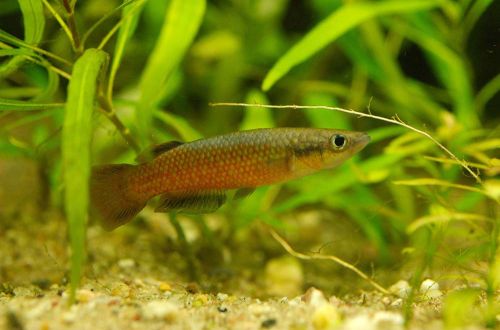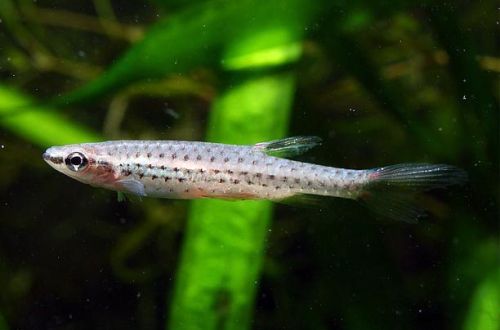
Indian striped barb
The Indian striped barb, scientific name Haludaria melanampyx, belongs to the Cyprinidae family. Some taxonomic uncertainty is associated with this fish, since a number of researchers consider it a variety of the Striped barb and do not distinguish it as an independent species.
Contents
Habitat
The fish comes from South Asia from the territory of western India. The natural habitat approximately coincides with the territory of the states of Goa, Karnataka, Kerala. Inhabits numerous river systems originating in the Western Ghats. Inhabits the shallow lower reaches of rivers with sand substrates covered with a layer of plant organic matter (leaves, branches, horses of trees, etc.)
Brief information:
- The volume of the aquarium – from 100 liters.
- Temperature – 22-26°C
- Value pH — 6.0–7.0
- Water hardness – soft (1-10 dGH)
- Substrate type – any
- Lighting – subdued
- Brackish water – no
- Water movement – weak, moderate
- The size of the fish is about 7 cm.
- Feeding – any food of suitable size
- Temperament – conditionally peaceful
- Keeping in a group of 8-10 individuals
Description
Adult individuals reach a length of about 7 cm. Red shades predominate in color, the abdomen is light silvery. The body pattern includes several black vertical stripes and markings. The size and number of stripes varies. In some cases, the Indian striped barb is identical to the striped barb.
Sexual dimorphism is weakly expressed. Males and females are practically indistinguishable from each other.
Food
Omnivorous species. The daily diet can consist of dry, frozen and live foods in various combinations. If the product is of high quality and contains all the necessary trace elements, then it is permissible to feed it exclusively with dry food in the form of flakes, granules.
Maintenance and care, arrangement of the aquarium
The size of an aquarium for a flock of 8–10 fish starts from 80–100 liters, provided that there is a productive filtration system and a weekly replacement of part of the water with fresh water. The maintenance of high water quality in the acceptable range of temperatures and values of hydrochemical parameters is important in keeping this species.
The design of the aquarium is arbitrary. The traditional option is a combination of free areas for swimming with places for shelters. As the latter, both natural snags, thickets of living plants, and any other artificial decor can be used.
Behavior and Compatibility
Active peaceful fish. Prefers to be in the company of relatives, so it is recommended to purchase a flock of at least 8-10 individuals. Compatible with most other freshwater species of comparable size. It is worth remembering that the high mobility of barbs may be excessive for some slow-moving fish.
Breeding / breeding
Features of reproduction are typical for cyprinids. The Indian striped barb during spawning does not form a clutch and scatters the eggs along the bottom. There is no parental care for offspring. Adult fish are prone to eating their own caviar, for this reason, breeding is carried out in a separate tank so that it is possible to transplant them back in time.
Fish diseases
In a balanced aquarium ecosystem with species-specific conditions, diseases rarely occur. Diseases are caused by environmental degradation, contact with sick fish, and injuries. If this could not be avoided, then more about the symptoms and methods of treatment in the section “Diseases of aquarium fish”.





